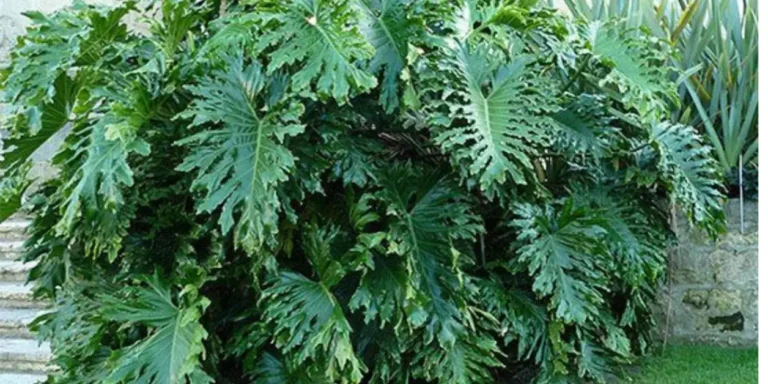Lilac Bushes, TYPES And Growing Tips
Lilac bushes are beautiful additions to gardens, known for their fragrant blooms. They belong to the olive family and symbolize springtime and renewal. With their vibrant colors and heart-shaped leaves, they add elegance to any environment.
Common types include the classic Common Lilac, compact Persian Lilac, and versatile Dwarf Korean Lilac. Planting involves selecting a sunny spot, preparing the soil, and ensuring proper care. Regular pruning and fertilizing help maintain their health.
Common pests and diseases can be managed with proper treatment. Lilac bushes thrive in various climates, from temperate to cold regions. Understanding their care needs ensures successful cultivation.

Syringa vulgaris
Syringa vulgaris, commonly known as the common lilac, is a deciduous shrub with fragrant and beautiful purple, pink, or white flowers. It is popular in gardens and landscapes for its attractive blooms and pleasant scent, typically flowering in late spring.

Characterized by its more compact size and delicate lavender blooms, the Persian lilac is an excellent choice for smaller gardens or as a border plant. Its subtle fragrance adds a touch of refinement to outdoor spaces.
Dwarf Korean Lilac (Syringa meyeri)
Perfect for compact gardens or container planting, the Dwarf Korean Lilac boasts petite, lavender-pink blossoms and a more restrained growth habit. Its adaptability and manageable size make it a versatile choice for various landscapes.

Miss Kim Lilac (Syringa patula ‘Miss Kim’)
Recognized for its unique bluish-purple flowers and excellent cold tolerance, the Miss Kim Lilac is a favorite in northern climates. This compact variety also offers a pleasant fragrance and attractive foliage throughout the seasons.

Exploring these diverse lilac varieties allows gardeners to choose the perfect fit for their specific preferences and gardening conditions.
Planting Lilac Bushes: A Step-by-Step Guide
Planting lilac bushes is a straightforward process that, when done correctly, sets the stage for healthy growth and vibrant blooms. Here’s a step-by-step guide to ensure success:
Selecting the Right Location
Choose a site with well-draining soil and full sunlight for optimal growth. Lilacs thrive in areas with good air circulation, helping prevent diseases.
Soil Preparation
Prepare the soil by adding organic matter like compost to enhance fertility and drainage. Lilacs prefer slightly alkaline to neutral soil conditions.
Digging the Planting Hole
Dig a hole twice as wide as the root ball and just as deep. Ensure the plant sits at the same depth as it did in its nursery container.
Planting the Lilac
Gently remove the lilac from its container, teasing out the roots if they’re tightly packed. Place the plant in the center of the hole and backfill with soil, pressing down gently to eliminate air pockets.
Watering and Mulching
Water the newly planted lilac thoroughly and apply a layer of mulch around the base to retain moisture and suppress weeds.
Establishing a Watering Schedule
Keep the soil consistently moist, especially during the first growing season. Once established, lilacs are relatively drought-tolerant, but regular watering promotes healthier blooms.
Fertilizing
Apply a balanced, slow-release fertilizer in early spring to encourage robust growth and flowering. Follow the recommended dosage on the product label.
By following these steps, gardeners can create an ideal environment for their lilac bushes, ensuring they thrive and contribute to the beauty of the landscape.
Lilac Bush Care and Maintenance
Maintaining the health and vitality of your lilac bushes involves regular care and attention. Here’s a comprehensive guide to keeping your lilacs in optimal condition:
Regular Watering
While established lilacs are relatively drought-tolerant, they benefit from consistent moisture, especially during dry periods. Water deeply, allowing the soil to absorb water to the root level.
Mulching
Refresh mulch around the base of the lilac annually to conserve soil moisture, regulate temperature, and discourage weed growth. Keep the mulch a few inches away from the trunk to prevent rot.
Fertilization
Feed your lilac bushes in early spring with a balanced fertilizer. Avoid excessive nitrogen, as this can lead to lush foliage at the expense of flower production. Follow recommended application rates for best results.
Pruning
Regular pruning is essential to maintain shape, encourage air circulation, and stimulate flower production. Prune immediately after flowering, removing spent blooms and shaping the bush as needed. Avoid heavy pruning, as lilacs bloom on old wood.
Disease and Pest Monitoring
Be vigilant for common lilac pests such as aphids and scale insects. Additionally, monitor for signs of powdery mildew or bacterial blight. Treat promptly with appropriate measures to prevent the spread of diseases.
Winter Protection
In colder climates, consider providing a layer of mulch around the base of the lilac in late fall to insulate the roots from extreme winter temperatures. This helps protect against freeze-thaw cycles.
Incorporating these care practices into your routine will ensure your lilac bushes survive and thrive, rewarding you with bountiful blooms and a healthy, visually appealing addition to your garden.
Pruning Techniques for Healthy Lilac Plants
Pruning is a crucial aspect of lilac care, contributing to plant health, shape, and abundant flowering. Here’s a detailed guide on pruning techniques for healthy lilac plants:
Timing
Prune your lilacs immediately after they finish flowering, typically in late spring to early summer. This allows the plant to set buds for the next year while still maximizing the current season’s blooms.
Removing Spent Blooms
To encourage continuous flowering and prevent seed formation, deadhead spent blooms. Use sharp pruning shears to cut the faded flower clusters just below the base of the stem, taking care not to damage emerging buds.
Thinning Out Branches
Remove a few of the oldest and woodiest branches at ground level every few years to rejuvenate the lilac bush. This practice promotes better air circulation, reducing the risk of diseases, and encourages new growth.
Shaping the Bush
Prune for shape by removing any crossing or crowded branches. Aim for an open and airy structure, allowing sunlight to penetrate the inner areas of the bush. This helps prevent diseases and promotes even blooming.
Rejuvenation Pruning
For older, overgrown lilac bushes, consider more drastic rejuvenation pruning. This involves cutting back one-third of the oldest branches to the ground over three consecutive years. While the plant may not bloom as abundantly for a season or two, it will ultimately result in a healthier, more vigorous lilac.
By employing these pruning techniques, you’ll maintain the structural integrity of your lilac bushes, ensuring they not only look aesthetically pleasing but also continue to produce an abundance of fragrant blossoms year after year.
Common Pests and Diseases in Lilac Bushes
While lilac bushes are generally hardy, they can be susceptible to certain pests and diseases. Being aware of these common issues and taking preventive measures can help maintain the health of your lilacs:
Aphids
Aphids are small, sap-sucking insects that can cluster on the tender new growth of lilac bushes. Regularly inspect your plants, and if aphids are detected, hose them off with a strong stream of water or use insecticidal soap for control.
Scale Insects
Scale insects can appear as small, flat, or rounded bumps on lilac branches. They feed on plant sap, causing yellowing and weakening of the plant. Prune and dispose of heavily infested branches, and consider introducing natural predators like ladybugs.
Powdery Mildew
Powdery mildew is a fungal disease that manifests as a powdery white substance on the leaves. Ensure proper air circulation, and if mildew appears, treat with fungicidal sprays or neem oil. Watering at the base of the plant can help prevent this common issue.
Bacterial Blight
Bacterial blight causes wilting, browning, and dieback of lilac branches. Prune affected branches promptly, disinfecting pruning tools between cuts to prevent the spread of the bacteria. Apply copper-based fungicides during the dormant season as a preventive measure.
Lilac Borer
Lilac borers are larvae of clear-winged moths that tunnel into lilac branches, causing wilting and dieback. Regularly inspect your lilacs for entry holes and sawdust-like frass. Prune and destroy infested branches, and consider applying insecticidal sprays in late spring.
By monitoring your lilac bushes for these common pests and diseases and taking prompt action when necessary, you can help ensure the continued health and vitality of these beautiful shrubs.
Tips for Beautiful Lilac Blooms
Achieving stunning lilac blooms involves a combination of proper care and some additional tips to enhance the beauty of these captivating flowers:
Sunlight Exposure
Ensure your lilac bushes receive full sunlight to promote abundant flowering. A minimum of six hours of direct sunlight daily is ideal for vigorous bloom production.
Adequate Watering
While lilacs are relatively drought-tolerant, consistent and deep watering during dry spells enhances flower quality. Ensure the soil remains evenly moist, especially during the growing season.
Mulching
Apply a layer of organic mulch around the base of your lilac bushes. Mulching helps retain soil moisture, regulates temperature, and prevents competition from weeds, fostering optimal blooming conditions.
Soil pH Adjustment
Lilacs prefer slightly alkaline to neutral soil. Regularly test and adjust the soil pH, aiming for a range between 6.0 and 7.0, to create an environment conducive to healthy bloom development.
Pruning for Blooms
Prune your lilac bushes judiciously to encourage the development of lateral buds, where the majority of blooms originate. Proper pruning not only maintains plant shape but also maximizes flower production.
Use of Fertilizers
Apply a balanced fertilizer with a higher phosphorus content in early spring to support flower formation. Follow recommended dosage to avoid over-fertilization, which can lead to excessive foliage growth at the expense of blooms.
Incorporating these tips into your lilac care routine will not only ensure vigorous growth but also result in a profusion of breathtaking blooms, transforming your garden into a fragrant haven.
Lilac Bushes in Different Climates
Lilac bushes are versatile and can thrive in various climates, but understanding their specific needs in different environments is crucial for successful cultivation. Here’s a guide to growing lilac bushes in different climates:
Temperate Climates
In temperate climates with distinct seasons, lilacs typically flourish. They require a period of winter chill to produce abundant blooms. Varieties like Common Lilac (Syringa vulgaris) are well-suited for these conditions.
Mediterranean Climates
Lilacs can adapt to Mediterranean climates, characterized by hot, dry summers and mild, wet winters. Adequate watering and soil preparation are essential for their success. Varieties like Persian Lilac (Syringa persica) are suitable for these regions.
Coastal Climates
Lilac bushes can thrive in coastal areas, but they may face challenges such as salt exposure and high winds. Select salt-tolerant varieties and provide windbreaks to protect against harsh coastal conditions.
Arid Climates
Growing lilacs in arid climates requires careful attention to watering. Choose drought-tolerant varieties and provide supplemental irrigation during dry spells. Dwarf Korean Lilac (Syringa meyeri) is a suitable choice for arid regions.
Cold Climates
Certain lilac varieties, like Miss Kim Lilac (Syringa patula ‘Miss Kim’), are well-adapted to cold climates. These lilacs withstand freezing temperatures and can add a touch of beauty to northern gardens.
Understanding the specific climate requirements for lilac bushes ensures successful cultivation, allowing these charming shrubs to thrive in a variety of environmental conditions
Conclusion:
In conclusion, lilac bushes are not just ornamental additions to gardens; they represent a timeless symbol of beauty, love, and renewal. From the diverse array of lilac varieties to the art of planting, care, and maintenance, each aspect contributes to the overall allure of these captivating shrubs.
FAQs
Q1: When is the best time to plant lilac bushes?
The ideal time to plant lilac bushes is in the fall, allowing them to establish their root systems before the onset of winter. Spring planting is also suitable, but fall planting is preferred
How often should I water my lilac bushes?
Lilacs prefer well-draining soil. Water deeply when the soil is dry to the touch, especially during dry spells. Established lilacs are somewhat drought-tolerant but benefit from consistent moisture.
Why are my lilac bushes not flowering?
everal factors, including insufficient sunlight, improper pruning, or nutrient deficiencies, can affect flowering. Ensure your lilacs receive adequate sunlight, prune them correctly, and fertilize as needed for optimal blooms.
How do I prune my lilac bushes?
Prune lilacs immediately after flowering, removing spent blooms and shaping the bush. Thinning out older branches and avoiding heavy pruning are essential for maintaining healthy lilac plants.
Can I grow lilac bushes in containers?
Yes, lilac bushes can be grown in containers, especially smaller varieties. Ensure the container has good drainage, use well-draining soil, and water regularly.






